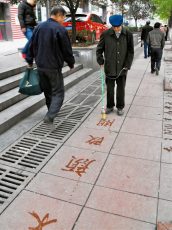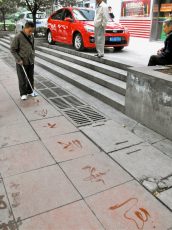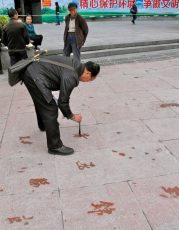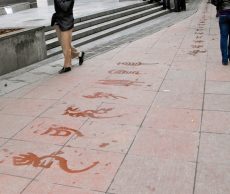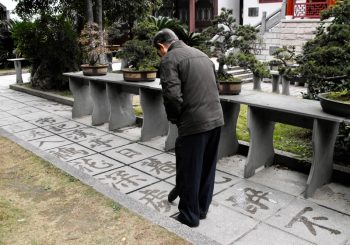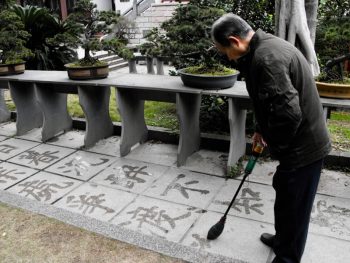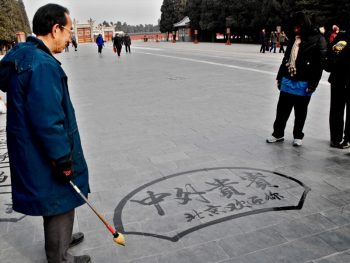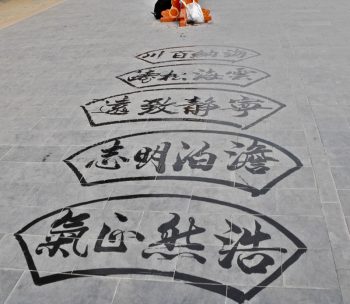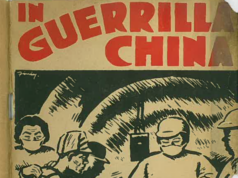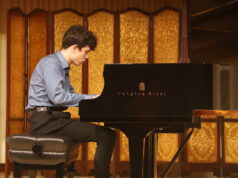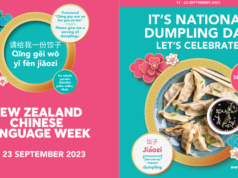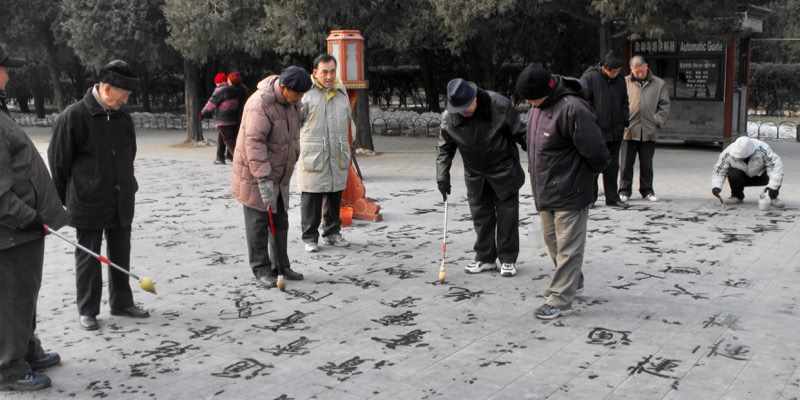
I must tell you something about a phenomenon that speaks ‘words’ about the Chinese love of their written word and the desire to meet like-minded people.
One sees mainly women dancing in the parks and streets of many of the major Chinese cities (and for all I know, smaller towns as well). But what of the men, particularly the older ones?
Well, they ‘write’ on pavements and park squares – not with ink or paint but with water! Of course, perhaps sadly, their beautiful calligraphy is ephemeral as the water evaporates….
But even so, they often write poems or well-known expressions – illustrated below, with each expression framed in a fan-shaped border.
Usually each writer is surrounded by a number of spectators, many of whom discuss, perhaps the finer points of the calligraphy.
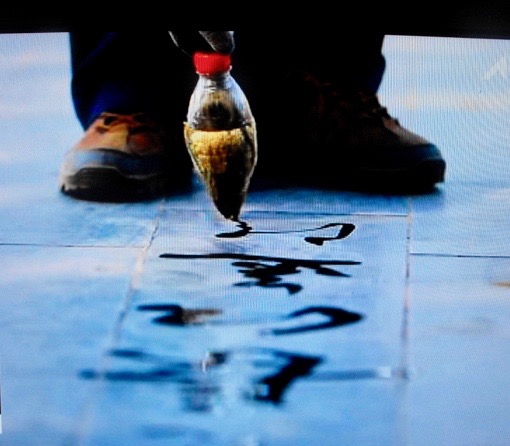
The equipment for this writing is usually a large brush with the water delivered by a tube from a bottle reservoir. I say ‘usually’ advisedly as I did observe in Kaili, Guanxi province, one writer using a ‘normal’ writing brush [máobǐ毛笔] .
Apparently, this pastime started in the 1990s, and is known as dìshū [地书 – ground writing].
One sees most styles of calligraphy: the most common is regular, or standard, script ( 楷书 Kǎishū), then occasionally the more flowing running script (行书 Xíngshū) or grass script (草书 Cǎoshū). And I have even seen one case of seal script (篆書 zhuànshū). The images below showing these styles were all taken of writing on a pavement (or sidewalk) in Kaili, Guizhou province.
Returning to the poetry, the first example we encountered was in West Lake Park, Fuzhou, Fujian province, was a poem by the premier Chinese lady poet of the Song Dynasty, Lǐ Qīngzhào 李清照 (1084–c. 1151).
Later, in the Temple of Heaven Park in Beijing, we admired a beautiful set 5 groups, each of 4 characters in a fan-like frame.
The 5 groups of 4 characters are five Chinese expressions:
“海 hǎi 纳 na 百 bai 川 chuan” – “All rivers run into the sea”
“云 yun 海 hai 松 song 涛 tao” – “Ocean of clouds and splendid pine trees”
“宁 ning 静 jing 致 zhi 远 yuan” – “Still water runs deep”
“淡 dan 泊 bo 明 ming 志 zhi” – “Live a simple life expressing one’s ambitions”!
“浩 hao 然 ran 正 zheng 气 qi” – “Awe-inspiring righteousness or the great spirit.”
These are very much in contrast to your author’s effort:
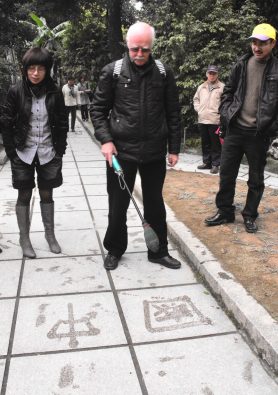
Additional Notes:
Click here for a website about dishu . It includes several videos of street calligraphers in action, one of which is writing a poem by Mao Zedong “Qin Yuan Chun Xue – Snow in Qin Yuan Chun“. [Qin Yuan Chun is an area in Changsha]. Changsha was where Mao was converted to communism.
Nancy Li, one of my wife Teri’s students at Hwanan Women’s College, Fuzhou, explained the difference between the usage of traditional and simplified characters, as follows:
“We have simplified Chinese characters and traditional Chinese characters. Complicated and hard to write, traditional Chinese characters are seldom used nowadays. Instead, we tend to use simplified Chinese. BUT in Chinese calligraphy, traditional Chinese characters are still used because they look much more delicate and also with a strong sense showing respect to culture. Besides, calligraphy is the cradle of Chinese civilization, so people prefer traditional Chinese characters when they write calligraphy.”
I acknowledge Chen Xiyao, and Nancy Li, for their help with the Chinese translations.
– Duncan France (NZCFS Member)


